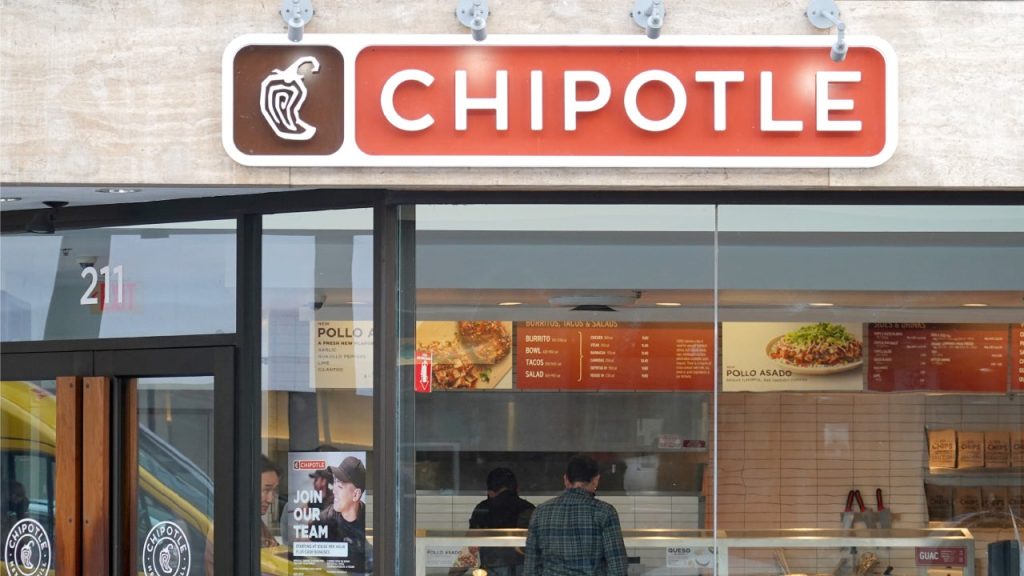Justin Sullivan/Getty Images
Chipotle Mexican Grill (CMG) is set to spice things up with a historic 50-for-1 stock split, a move unprecedented for the company and a rarity in the restaurant industry.
How the split will work
On Wednesday, June 26, the fast-casual dining chain will begin trading on a post-split basis once a 50-for-1 stock split is completed after the market closes on Tuesday, dramatically increasing the number of shares outstanding and potentially making the stock more attractive to a wider range of investors. Shareholders of record will receive 49 additional shares for each Chipotle share they owned before the split.
Why Chipotle is splitting its stock
Chipotle, known for its fast service and customizable burritos and bowls, has never undergone a stock split before.
The decision to split the stock stems from a desire by company leadership to make Chipotle’s shares more accessible to retail investors. With a pre-split share price hovering around $3,200, Chipotle’s stock could be seen as a pricey entry point for some individual investors.
Company leaders say they also want to make the stock more affordable for employees.
“With this historic decision, we’ll be better able to reward our team members and empower them to have ownership in our company,” says Jack Hartung, chief financial and administrative officer of Chipotle in a June press release.
Chipotle’s 50-for-1 stock split: One of the biggest in NYSE history
Chipotle’s 50-for-1 split is a bold move. While stock splits are relatively common, a 50-to-1 ratio is rare. In fact, it’s one of the biggest stock splits in New York Stock Exchange (NYSE) history.
Most companies have opted for more modest splits in recent years. In 2022, for example, Tesla completed a 3-for-1 split, and Amazon did a 20-for-1 split. Even Nvidia’s 10-for-1 split earlier this month seems tame compared to Chipotle’s move.
Chipotle has been dishing out impressive financial results, too. Consistent quarterly growth, including success during the pandemic thanks to their digital ordering system, has fueled the company’s success. This translates directly to their bottom line, with Chipotle reporting a stellar 14 percent rise in revenue to $2.7 billion during the first quarter of 2024, alongside impressive gains in earnings per share and operating margin.
Understanding stock splits: A slice of the pie, not a bigger pie
It’s important to understand that a stock split, by itself, doesn’t change the underlying value of a company.
Imagine you own a whole apple pie. A stock split is like slicing that pie into more pieces. You still own the same amount of pie, but now it’s divided into smaller portions.
In Chipotle’s case, each individual share will be worth a fraction of its pre-split price, but the total value of your holdings will remain the same.
So why do companies split their stocks? A few reasons. One, as mentioned earlier, is to make the stock more affordable to individual investors. A lower share price can psychologically feel more attainable. Second, a high share price can sometimes limit trading activity. Splits can increase trading liquidity, making the stock easier to buy and sell.
Fractional share investing is common at many online brokers these days, so investors just starting out can get a slice of a company’s shares with a much more modest amount of money and no stock split required.
Beyond the split: What investors should consider
While the stock split itself doesn’t directly change the value of your holdings, it doesn’t happen in a vacuum, either. The announcement of a split often triggers a temporary price jump as investors anticipate future growth.
However, long-term factors like the company’s financial performance and overall market conditions will still likely be the driving forces behind Chipotle’s future market value growth.
For current shareholders, the split simply means more shares at a lower price. But the split could make the stock more appealing to new investors, potentially impacting the future share price.
As always, investors should conduct their own research and consider their own financial goals before making any investment decisions.
Editorial Disclaimer: All investors are advised to conduct their own independent research into investment strategies before making an investment decision. In addition, investors are advised that past investment product performance is no guarantee of future price appreciation.
Read the full article here

